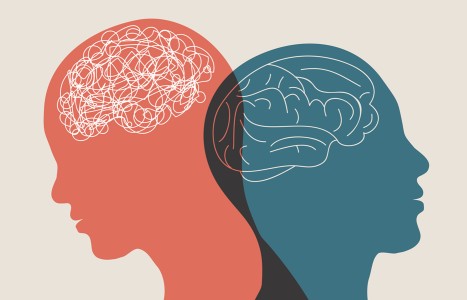Consequences for HIPAA violations can often be quite harsh. If someone has breached the HIPAA privacy regulations – even without any malicious intent, civil penalties are applicable: $100 per violation for unawareness, a minimum of $1,000 for reasonable cause, a minimum of $10,000 if willful neglect is present and then rectified, and finally, a minimum of $50,000 for individuals who act with willful neglect and ignore the issue.
| Digital ExclusiveWhen East Becomes West
For years, traditional Chinese herbal medicine has stood as an alternative to Western medicine. Studies have been conducted to prove that TCM can produce the same - or better - results as Western medicine, with the added benefit of being less invasive and having fewer side effects.
Now, however, it appears there is a trend among some herbal manufacturers to not only emulate the Western drug model, but to actively partner with some of the biggest global pharmaceutical companies in order to market remedies - not as herbal medicines, but as Western drugs.

Last August, Chi-Med Hutchinson, a Chinese TCM pharmaceutical company, announced it was entering into a research and development partnership with the global pharmaceutical giant Eli Lilly and Company to develop oncology and anti-inflammatory drugs using Chinese herbal formulas. Lilly is the manufacturer of the most popular psychiatric medication on the market (Zyprexa) and posted sales of $18 billion for 2007, a 19 percent increase over the previous year.
In November 2006, Chi-Med Hutchinson also entered into a research partnership with Merck, which markets the most popular asthma medication on the market (Singulair) and posted sales of $24 billion for 2007, a 7 percent increase over the previous year. Merck also publishes the Merck Manuals, a line of popular health care reference books aimed both at consumers and medical doctors.
This might only be of interest to investors and Wall Street analysts, except for Chi-Med Hutchinson's most recent announcement on Feb. 29 of this year that it is starting to enroll patients in a global trial of its experimental anti-inflammatory drug HMPL-004 to treat ulcerative colitis. The company states that the drug is "a compound extracted from a Chinese herb that has extensive history of use in China and Southeast Asia against respiratory infections and inflammation." The trial will be conducted in 50 study centers worldwide, including North America and Europe. Interestingly, Merck was behind another gastrointestinal anti-inflammatory drug pulled from the market in 2004; the ill-fated Vioxx (Rofecoxib).
Chi-Med Hutchinson is not the only TCM herb company looking to the West for major research and financial assistance. The Delaware News Journal , in an April 6, 2008 article, noted that the Shanghai Innovative Research Center of Traditional Chinese Medicine plans to apply for approval to conduct trials in Finland on an antidepressant medication extracted from Chinese herbs. Jiang Hong-Quan, an official with the center, told the Delaware News Journal, "After seven years of study, we have extracted a single active ingredient from ginseng herbs. The pre-clinical trial has showed that this drug is safe and effective. The efficacy of this drug is very close to Eli Lilly's Prozac [fluoxetine] but the cost is much lower." He added that the center hopes to eventually garner FDA approval to conduct clinical trials in the United States. On the center's own Web site, Eli Lilly Netherlands is listed as one of its cooperation partners.
Moleac, a biopharmaceutical company based in Singapore, states on its Web site that it "identifies promising medicine discovered in China and develops them into Western mainstream medicine." The company's biggest product is NeuroAid, a stroke drug based on a blend of 14 Chinese herbs, which it claims can double a stroke victim's chances for recovery after only a month of treatment. Moleac CEO David Picard told a Singapore financial newspaper, "NeuroAid probably helps build new circuits of information that would substitute the ones damaged through stroke." He added that by comparison, Western medicine has so far focused on preventing additional strokes, rather than building new neuropathways. The drug's safety and efficacy data all stems from a large, multi-center, randomized, double-blind placebo trial taking place in China. Results have been so promising that U.S. investors have kicked in an additional $3.5 million.
Whether it's through R & D partnerships with big pharmaceutical companies, or conducting large-scale clinical safety and efficacy trials, it does appear that some TCM manufacturers are looking to emulate the Western model for developing, testing and marketing medicinal drugs. One wonders if using this approach is a way to make the medications more Western-consumer-friendly. The Delaware News Journal article noted:
"The market for pharmaceuticals is huge, but in the past few years, with few new drugs in the pipeline, the industry has hit a lull and is looking for a new direction. Enter Traditional Chinese medicine (TCM), long a source of therapy for the Chinese, and more recently a source of pharmaceutical ingredients for Western drug makers.
"However, on top of the efforts noted above, another new approach is now evident, thanks to a landmark 2004 ruling by the U.S. Food and Drug Administration, which combines the Eastern and Western approaches by allowing pharmaceutical drugs derived from plants to contain more than one active ingredient. Drug companies around the world have taken notice.
"TCM has now expanded in this bold new direction - using botanical drugs that mimic Western drugs because they have verifiable and measurable effects, but behave like Chinese drugs, because they combine several active ingredients into their therapies. It's a way forward for the world's drug manufacturers, and they are beginning to take action."
All of this begs the question: Should TCM take a more Western approach in developing, testing and marketing medicinals, or should it continue to stand as an alternative to those Western methods? Only time - and perhaps the outcomes of clinical trials - will tell.
Resources
- Drug Makers Fusing East With West. Delaware News Journal. April 6, 2008. www.delawareonline.com/apps/pbcs.dll/article
?AID=/20080406/BUSINESS/804060318/1003. - List of Bestselling Drugs. http://en.wikipedia.org/wiki/
List_of_top_selling_drugs. - Eli Lilly 2007 Financial Highlights. www.lilly.com/investor/annual_report/
lillyar2007.pdf. - Merck 2007 Annual Review. www.merck.com/finance/annualreport/ar2007.
- Rofecoxib. http://en.wikipedia.org/wiki/Rofecoxib.
- China Stroke Drug Holds Promise. The Business Times Weekend News . April 5, 2006. www.moleac.net/news/04052006%20-%20
TheBusinessTimesWeekend.pdf. - US$3.5m More for Moleac for Stroke Drug Trials. The Business Times . April 4, 2008. www.moleac.net/news/Three-Minute-DigestTBT.pdf.
- CHIMES. Chinese Medicine Neuroaid Efficacy on Stroke Recovery. www.strokecenter.org/trials/
TrialDetail.aspx?tid=783.



